2015 Husqvarna 350 FE
There is no U after the Q in Husqvarna, so just call it a Husky.
MSRP: $9649.00
- All the good points of the solid KTM brand and different enough to be a Husky.
- If you hate the PDS shock, is the Husky ever for you!
- Husqvarna history is being embraced and serious investment in racing is evident.
- Husky killed Husaberg!
- "It's just a white KTM XCF-W/XC combo."
Introduction
- The next chapter in the Husqvarna Motorcycle saga.
Husky’s are not new, but this scenario of the company is. And as much global confusion as there is about what a Husky, or Husqvarna to be proper, is, it is simply a KTM platform with some changes that make it into a Husky. Just like the last rounds of Husabergs were essentially slightly altered KTMs, now Husqvarna has become this brand. And no matter what the future plans are for the company, we have these bikes here and now. The 2015 Husky’s are built in the same factory as the KTM models they so resemble and in a lot of ways they are very similar, right down to the majority of the part numbers. But the Husky also has a uniqueness about it that makes it different. Maybe the biggest is that it isn’t orange, but if you know what you are looking for in performance, Husky may offer an alternative beyond color and appearance.
Changes
- Different than the KTM 350.
- Different than the Husaberg 350.
- But very similar to the KTM 350 and former Husaberg 350.
Since this is Husky’s second year in the US in its current state, there is nothing in common with older Italian built Husqvarnas. The 2014 350 FE was the Husaberg rebadged. Very similar to the 2015 FE, now getting some styling changes to the shrouds, front fender and headlight. Maybe it would be better to compare it to the KTM’s it sits between in the Orange range. The 350 FE could be said to fit between the KTM 350XCF-W and the 350 XCF. It has the same motor as the XCF-W from the back of the throttle body to the inlet of the muffler, right down to the homologation sticker on the frame. Then the chassis is a lot more like the XC-F or SX-F using a linkage activated shock and also the WP 4CS front fork. Here is where it becomes Husky. The inlet of the air boot is different because of the shock placement so that and the air box should account for all of the differences in engine character. Next the sub-frame of the Husky is a three-piece composite design as opposed to aluminum. The fenders, gas tank, shrouds and seat are all unique Husqvarna shapes as is the tool-less air filter mounting and side cover attachment. On the chassis side a few things differ from the current year KTMs like the use of the smaller rear axle compared to the 2015 KTMs. On the lower frame where the footpeg attaches, the segment is different having a unique attachment for the sub-frame. The Husky also has the machined billet and black anodized triple clamp as opposed to the cast part on the KTM XC-W. Husky chooses to leave off the backup kickstarter to save weight.
Power
- The smoothest of the off-road 350cc four-strokes.
- A very quiet engine for all of its power.
- Fuel Injection is spot on through a very light throttle pull.
If this was a motor we were not so familiar with we’d spend a bit more time describing it, but for all but the most picky it is exactly like the KTM 350 XC-W except for these slight differences. The most noticeable for all of our testers was that the Husky is quieter to the rider since the openings to the air box are different. This amplified the second most common comment that the Husky felt a little slower. Well it isn’t slower but there is a difference in the way the bike responds when getting on the throttle. It is smoother and then starts to make the good power at a slightly higher RPM than the KTM 350 XCF-W. This we attribute to the air boot having to go around the shock compared to the more open boot on the PDS equipped KTM. But the difference is pretty minor and without the reduction in sound most would never notice it. The Husky also reached the rev limiter easier and has slightly more compression braking. But those observations were within the range of differences in two identical same brand bikes with small differences in something as simple as the idle speed.
The FE engine starts easily as soon as the decompression device kicks in, which sometimes takes a second or longer push on the starter button. Way easier than kicking and there is no way to kick the Husky, it does not have a kickstarter installed.
So in reality the 350 FE is that much sought after “perfect size” that manufacturers have been looking for forever. It has a lot of the liveliness and lack of weight from power or rotational forces that a 250cc four-stroke possesses. The Husky has a lot of torque but you have to trust it since there isn't a lot of flywheel feel to the power strokes. But trust us if the throttle is cracked, even a little, the bike is very reluctant to stall. Then if rolled on it builds power smoothly and predictably without any steps in the power all the way to the 12,000 RPM rev limit and near 45-horsepower peak. It does not pick up as suddenly or with the authority of a bigger displacement like 450cc but the same speed and pull can be achieved by just increasing the RPM where you are riding the bike. For trail riding the slower paced crowd will be stoked on the excellent power from such a light bike. And the racer just has to rev the machine.
The hydraulic clutch is excellent in feel though we would always like a little lighter pull--but then you might abuse it too much? The durability is top-notch and it allows smooth shifting through the six-speed transmission. It is tough to call it a wide-ratio since it does not have the kind of gaps typical to a wide-ratio spread. First is plenty low for even the most technical riding and in top gear you can achieve 90 mph. And if the shifting ease starts to fall off, that is a sign to change the engine oil, especially in during break-in which really takes a good ten-hours to free up and run to potential. And the engine will easily pull longer gearing, we ran down to a 48-tooth rear sprocket in the desert for a little more spacing between the gears and loved it.
One other thing that stood out with this Husky was that the cooling fan rarely came on and when it did it turned off much quicker than the KTM350 we were riding it alongside of. That said the FI is spot on and we had the bike up to 8000 ft. and it never missed a beat.
Suspension
- The same suspension components as the motocross bikes, cartridge fork and Linkage activated shock.
- Compression adjustment on one fork and rebound adjustment on the other.
- A fully adjustable rear shock with high-and low-speed compression damping.
Here is the area the will set the Husqvarna apart from the KTMs with the same engine family. Linkage shock and a cartridge fork. There is a common belief, especially among motocross riders that you have to have a linkage to have the bike work properly. KTM and many off-road riders enjoy the simplicity of the linkageless PDS system but there is no such option at Husqvarna. They basically have the same suspension components on all of their bikes from FE to FC just set up for the intended rider.
The WP 4CS fork is basically a closed cartridge fork with individual compression and rebound adjustments, one atop each fork leg. This fork has a slightly different feel than an open cartridge fork in that it is a little stiffer on the initial hits and gets progressively stiffer feeling in comparison. The higher the speed (fork shaft travel, not ground speed) the more stiff it tends to act. Break in really helps these forks for sure, we saw that after about 10-hours were the constant fork tinkering stopped since the initial movement did improve. And the adjusters do not seem to have the “usual” effects on both compression and rebound sides. They act more like a mid-speed or high-speed adjustment where you’d typically have to have a suspension expert revalve the fork to get the same result.
The good thing about the fork is that Husky got it right in the overall setting of the bike as long as you are trail riding or trail racing it. And once you learn to use the adjustments you can be really happy. We learned to use them in tandem mostly thinking about the higher in the stroke you can keep the fork, the softer it acts, right up to a point where it gets a racing stiffness feel then you back off.
The shock is a nice match but does not suffer any of the sharp-hit stiffness as long as the ride height is in the correct range. It has a plushness that you’ll never get in a KTM XC and is very comparable to the PDS on the XC-Ws. And here is another area that the Husky differs but we will get more in depth in the handling segment of the test. Everything about the shock is conventional and common as far as adjustments go. The linkage seems to allow for a larger range of conditions before we felt the need to make an adjustment. And for off-road the advantage seems to be in the ability to be able to run a much looser rebound setting to get traction and not have the back end of the bike ride up too high.
The overall balance of the FE is great and it, like most bikes on WP suspension fits a very wide range of riders and skill levels. If you can’t get the suspension working for single-track riding and you are within the 160-200-pound range you are either special needs or have not tried enough.
The bike has decent bottoming resistance but you can clank it if you push it. And like most bikes with an off-road setup steep jump faces will use up plenty, if not too much stroke just like hard landings. This is the same softness that allows the bike to move through the stroke when hitting roots or rocks. In sand or on higher speeds we were as many as 6 clicks stiffer on the forks compression and opened up about half that much on rebound. Then in the slow and loose rocky stuff it was a toss-up between that or going to the complete opposite side with 6 clicks softer on compression and opening up the rebound even further to 6 less from standard. The only time we slowed the rebound from standard was when we wanted a stiffer feeling front end.
Chassis - Handling
- For such a different chassis the solid handling is very similar to the KTM 350 XCF-W we love.
- The linkage allows much more range in conditions before adjustment is needed.
- The Husky feels lighter than it's 265-pound scale weight shows.
For the most part and for the average rider the Husky handles just like the KTM 350 XCW-F. And for so many differences in the chassis setup most would think different. This is not a bad thing since we feel the KTM XCF-W sets the standard other single track bikes should be judged by. But a high-level rider can detect some differences and those may be the things that could set this bike apart from the other choices for you.
The first thing is that the Husky has a little bit more lively feel and a little more precision in the front end, especially when accelerating. The bike does not squat the same as the PDS bike. Weight wise at 265 pounds with a full tank of gas, it is a full 10-pounds heavier than the KTM XCF-W. But you do not feel this when riding and in fact it feels just as light. It also has the sensation of having a longer wheelbase while still turning just as easy. Stability is a tad better than the KTM and headshake was never mentioned in any of our testing, even in the desert. So needless to say we really like the way the Husky handles. It will make any 450 feel heavy.
Some testers familiar with KTMs commented that the FE felt a little wide at their boots especially when in the back of the pegs and then wider at the calf of the leg when getting back on the bike. After a few rides you don’t even notice it. The tank hides 2.4-gallons of fuel and that was good for 80-miles of riding at a moderate pace. The tank and shrouds also have some wider and thinner spots in comparison to the KTM. Overall the 350 can be very efficient if you want it to be and then never seemed to eat fuel like a 250F can when pushed. One oddity was the left rear side panel’s pointy tip caught on riders legs during pivot turns, if that concerns you. It does not happen on the pipe side since the muffler prevents this.
The brakes are very strong and have great feel, bonus for the easy lever adjustment. The Dunlop MX81 tires get the job done in a variety of conditions but we found getting a tire more specific to the conditions will really boost the performance in traction.
And onto the linkage. It is a funny area when talking to anyone at Husky or KTM about it since they don’t like to criticize each other. From what we could gather it was used on the Husky to make it different than the very similar KTM, which seems like a wise move. And that would be one less unique set of subframe parts to manufacture. Depending on how you use the bike you may never know it is there until you have to grease the extra three bearings. But if you hop over logs and rocks it will remind you it is there like most linkage equipped bikes. But the biggest difference seems to be in the way bumps are transmitted to the chassis through the swingarm and to some extent the composite subframe. The TE has a softer feeling in the back as far as your feet are concerned.
You can get the FE to handle however you like with alterations in the ride height of either the front or rear end. Run it high in the rear and the bike can turn as good as anything. Lower the rear and you can steer on the rear wheel and transition into slides gracefully. This is the sign of a well-balanced and pretty sorted bike.
Conclusion
- Is the Husky "weird" enough to be different?
- It isn't different in any way that hampers performance one bit.
- Parts and dealer network are beyond what a niche brand can offer.
So the next and every evolving chapter in Husqvarna’s history has been penned and created. It looks like a very positive one indeed as the powerhouse of KTM has taken the abused brand and instantly injected some serious performance into the bikes. You can’t just come along almost copy the best bike out there and get away with it. Yet there are enough significant changes to the Husky versus the KTM that they are different bikes going about creating the same end result.
There are some items that have better fit and finish than the KTM. The air filter attachment and the attachment of the cover seem to be a little more secure. The gripper seat cover and its foam are a bit better than the Orange bike. The headlight actually works at throwing light where you need it. The FE has a nice simple speedometer/odometer. There isn’t much not to like on the bike and our complaints list is minimal. Like, white bikes look more beat up and dirty a little quicker and easier.
If there are still any long-time Husqvarna fans willing to carry on with loyalty, this will be the best version of that quest since Husky’s were built in Sweden. For those looking to just be on a different brand, the Husky is the safest choice you could make, just don’t get too upset when white bikes get a lot more common very quickly. It surely isn’t a Beta, Gas Gas or a Sherco. In reality this 350 FE seems a wise and logical step in providing a great bike while the real work at Husqvarna goes on in the marketing and dealer networks. There are close to 1/3 more Husky dealers than just two years ago and aftermarket stuff unique to Husky is showing up quickly. To not have to make any excuses with your core business of selling great dirt bikes while focusing on other sides of the business is a very positive position to be in.
Recent Product Tests
What Others Said

http://www.motoonline.com.au/2014/08/08/tested-2015-husqvarna-fe-350/

http://dirtbikemagazine.com/home-features/husqvarna-fe350-test
Rider Opinions
Leave a Reply




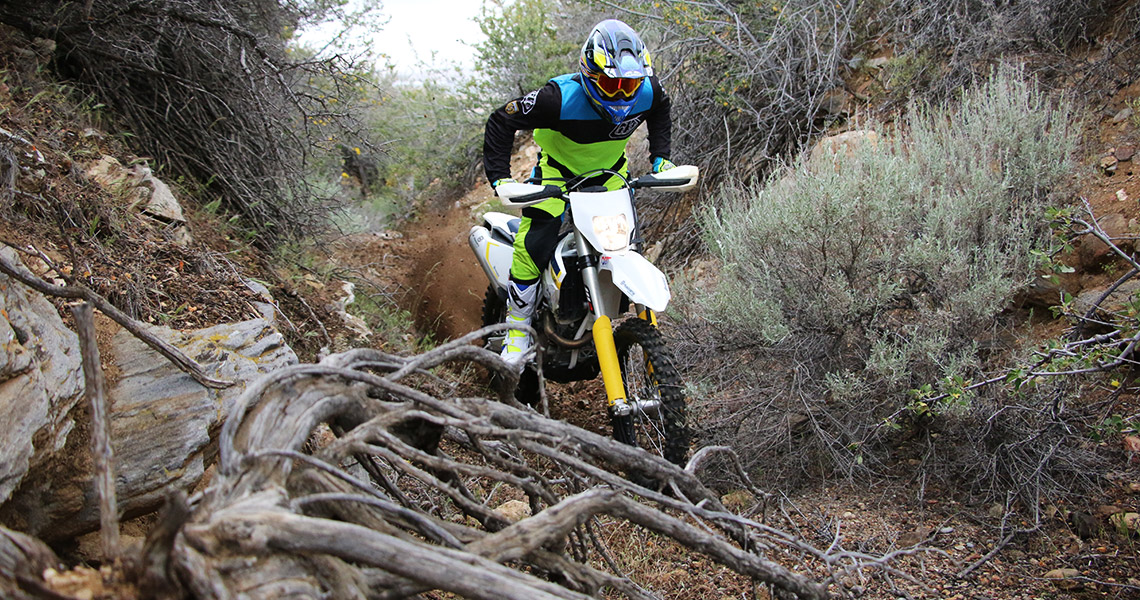
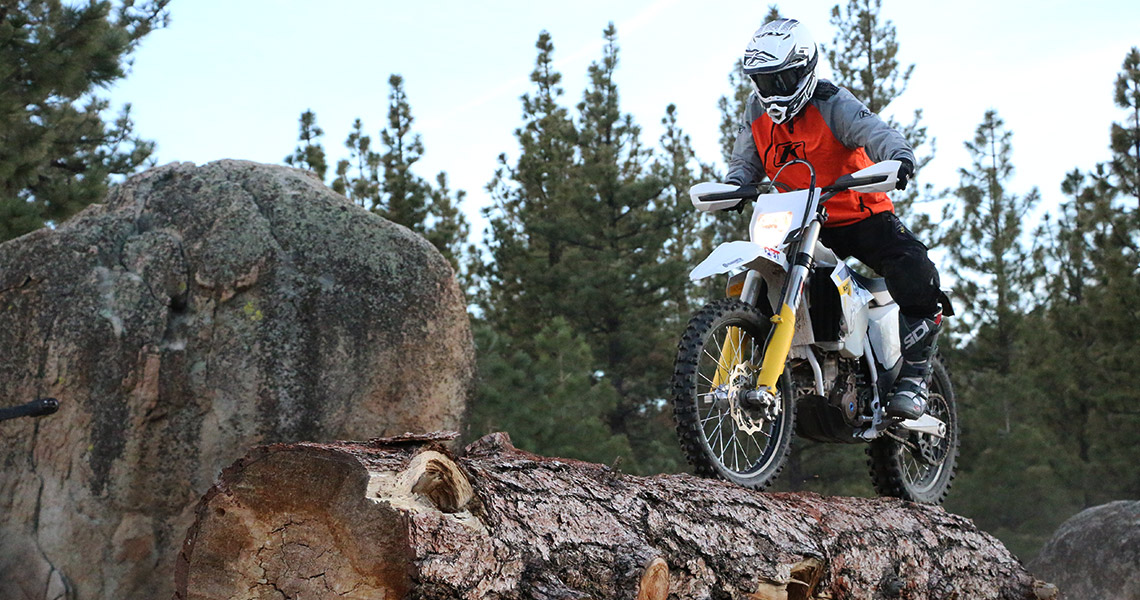






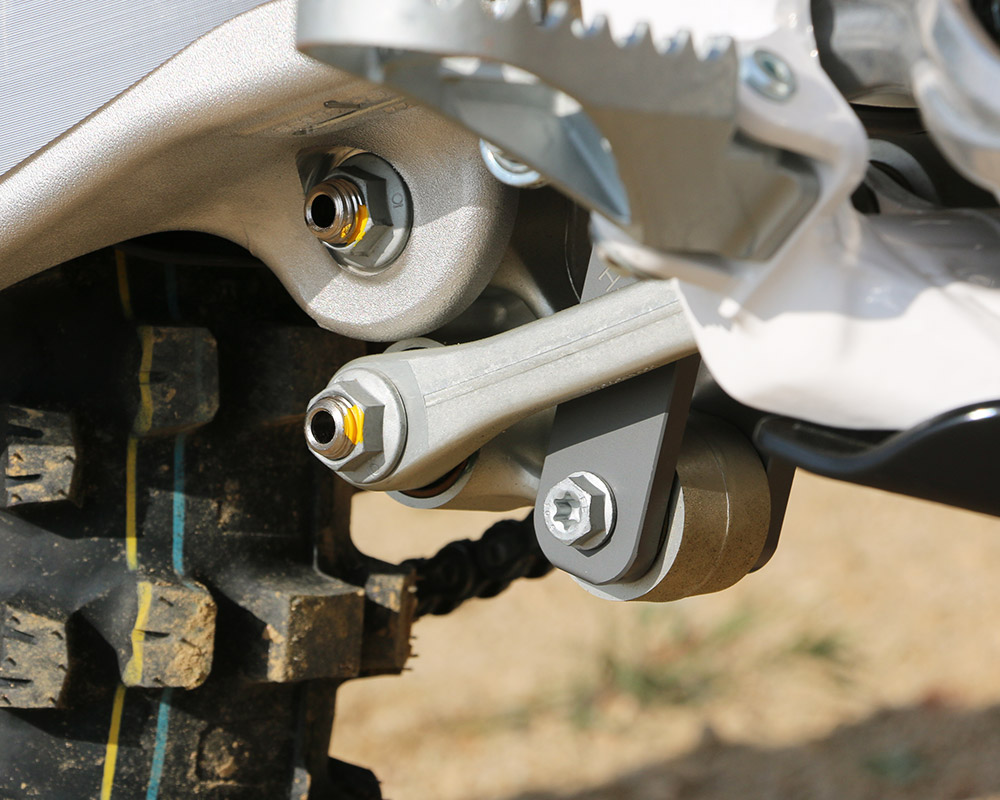
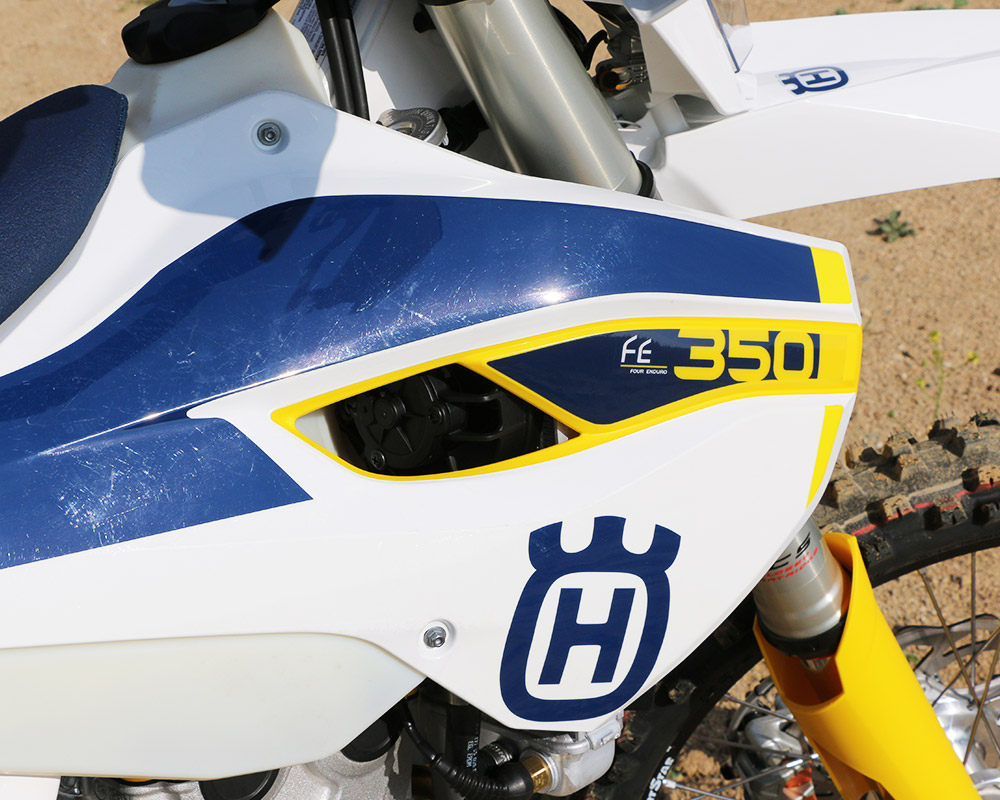









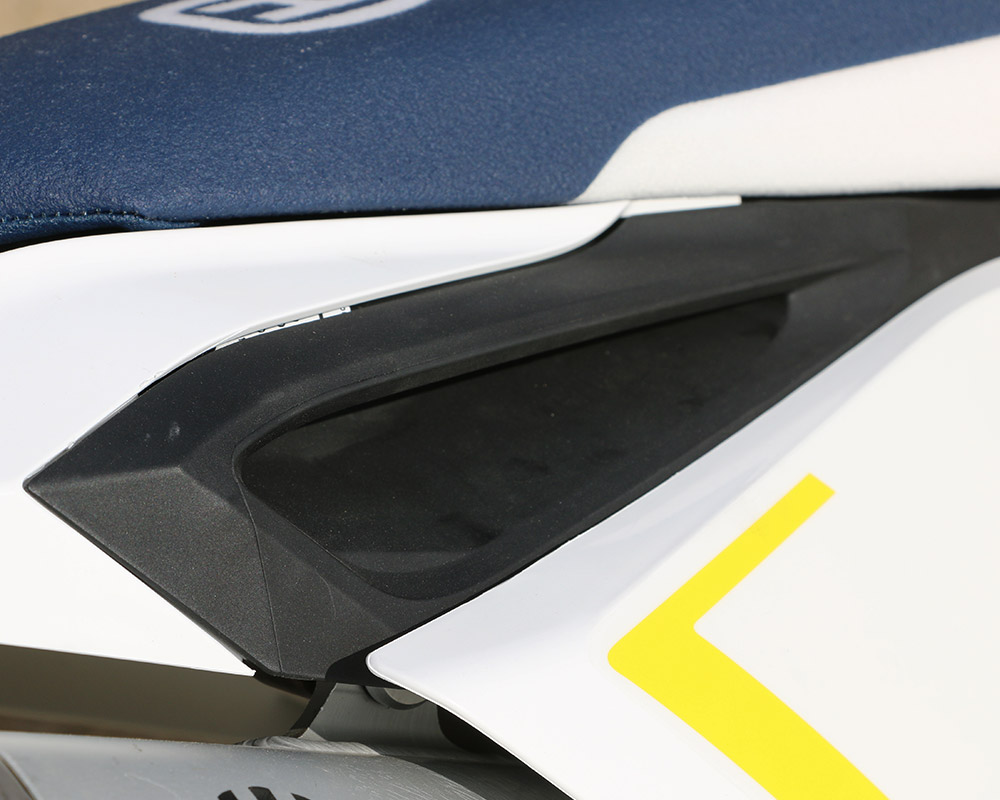















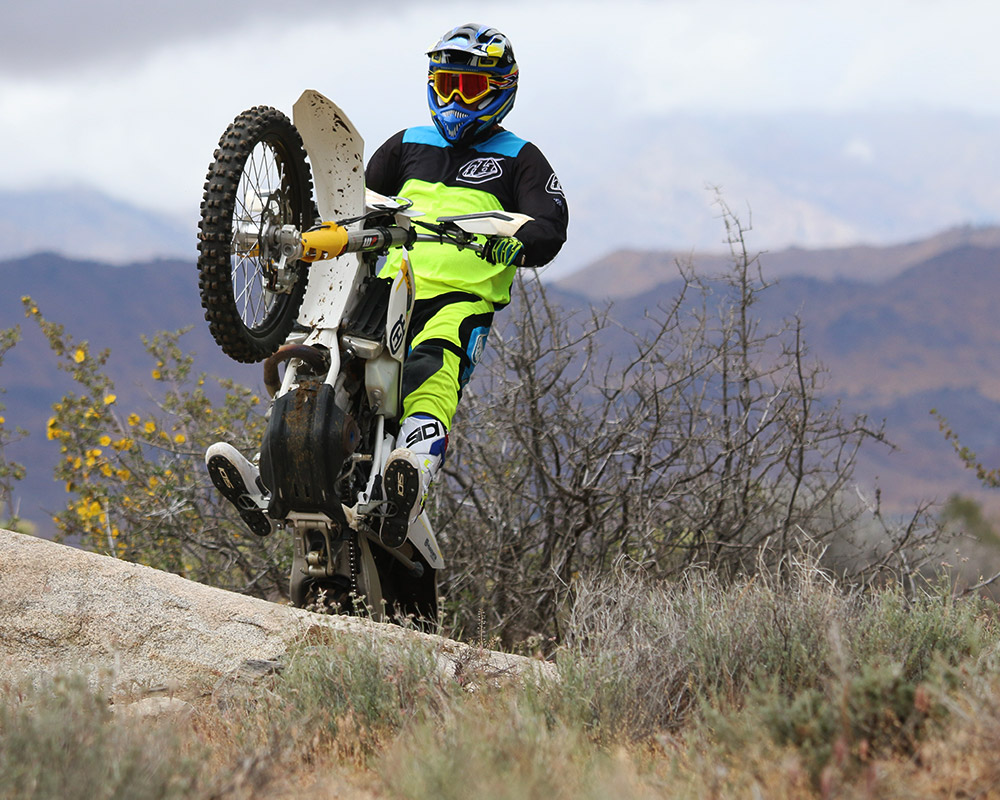












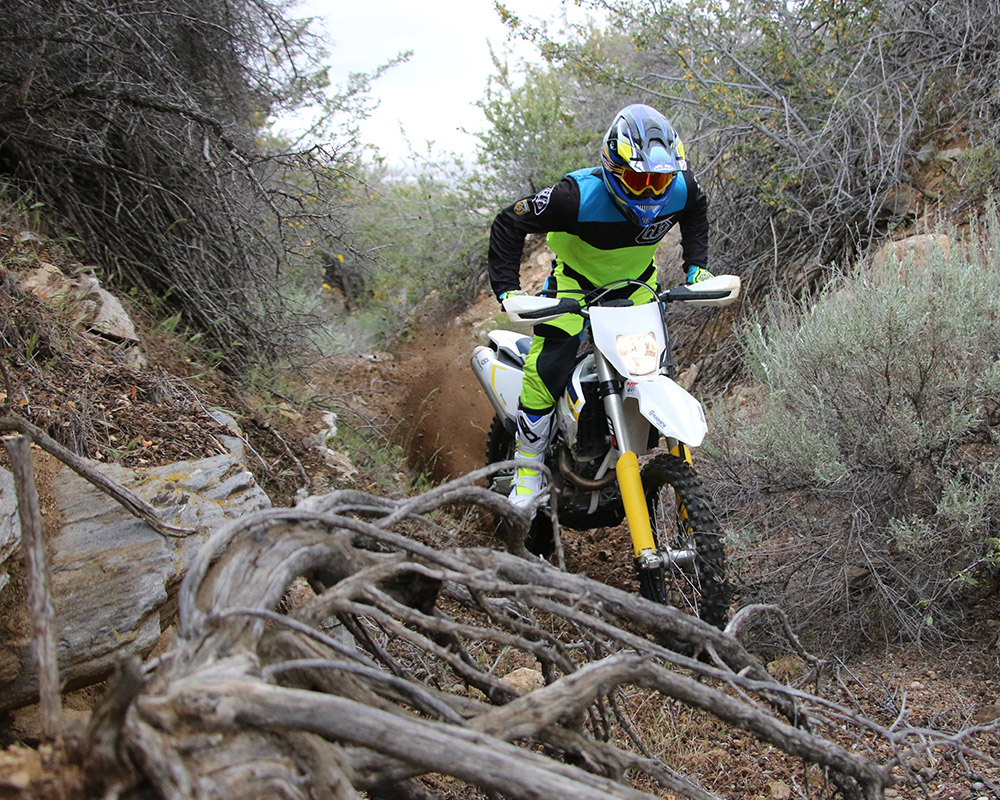



14 Responses to “2015 Husqvarna 350 FE”
Jimmy Lewis
If you have any questions about the 2015 Husqvarna 350 FE, let us know in the comments and we’ll try and get those answered for you.
Dane
Jimmy hey there – Just curious. You are listing the FE350 at 265lbs on the scales. It’s listed at 240 dry on the Husqvarna web site. Tank is 2.5. My math at best it should tip the scales under the 258lb mark no problem. Did you guys typo that? Thanks.
Jimmy Lewis
No, that is actual weight on our scale. Full of gas.
turb0diesel
Comparing weight to the 350XCF-W: I thought linkage and composite subframe were about 5-6lbs extra total… and then you have the FE350 missing the kickstart (~2lbs)… yet still a 10lb delta between the two? Wow, that is huge.
Jimmy Lewis
Our scale does not lie…
turb0diesel
True… and I really appreciate you actually weigh bikes instead of regurgitate manufacturer claims like most media does. I realized I was looking at ’16 MX bikes to compare weight of subframe (FC vs SXF) and it looks like they made the subframe lighter on ’16 FC’s. FE to XCF-W weight delta should be only: (Composite subframe- Al subframe)+(linkage-PDS) – kickstart but clearly there is more going on there to get +10lbs. Maybe there was some tire weight differences in there too that favored the XCF-W and Hand-guards/skidplate perhaps??? It is depressing to see the FE is that much heavier. 😉
Harley
Been checking back here regularly hoping to see a Husky (real) review!
Any scoop as to whether the “S” model Huskys are setup the same as the regular FE? Are they as similar as they appear, or are there any noteworthy differences between the regular and the S model, maybe suspension valving or ECU?
Any chance of a FE501 review? Obviously a very similar chassis setup to the 350, but would love to hear your thoughts on the 501…
Thanks…
Jimmy Lewis
We have not ridden the Husky “S” bikes yet but hope to in 2016. From what I know they are as different as the KTMs between XCW and EXC which means minimal changes mostly related to sound. The chassis is identical between the bikes except for the evaporative catch system, lights, wires and mirrors.
Same goes for the 501. Hopefully soon.
Jake Fairbanks
Out of all the 350’s you’ve tested (Husky, Beta, KTM) which one is your favorite and why?
Jimmy Lewis
That is a pretty loaded question and would require us picking exactly what the use for the bike would be. Each one has an area where it shines and some are not good in other uses. For instance the KTM 350XC-F is a horrible trail bike when compared to the KTM 350 XC-W or Husky. The Beta has some strong suits as well, is could be the most versatile, but it isn’t as polished as the Austrian bikes. Any time a track comes into play the KTM XC-F is the only choice. Hope this helps.
Jimmy Lewis
Hopefully we will be testing some of the 2016 Beta four-strokes soon.
Jimmy Lewis
Honestly you are right in the window of who the bike was set up for. But maybe not for motocross as the FE is definitely set up more for trails. Your manual will give you set up information and KTM/Husky has settings for “comfort” and “sport” I believe. One is softer than standard and the other stiffer but keeping the balance and character of the suspension intact. Try those if you are not happy with the standard setting as is is all but impossible for someone to give suspension advice from behind a keyboard without knowing a lot (way, way) more about the issues you are having. That is why suspension tuning is such a good business.
Ron Pavlak
Thanks for the reply, Jimmy. I realize my question was unrealistic as settings will vary for many different reasons. If I may, I’d like to get your thoughts on a couple of other things. Did you find the Husky 4CS forks to have the mid-stroke harshness the KTM’s supposedly have? If so, can they be adjusted to work well enough without sending them to be revalved?
Jimmy Lewis
The 2015 Husky we had did exhibit a little of that but not to the extreme of the 2015 KTM but then again not as good as the 2016 KTM. You just have to know the compression and rebound adjusters do not work like conventional forks and look at them more like mid-speed adjustment. Then maybe you can tune it out depending on what you feel. Typically stiffer holds the bike up a little more in the stroke and therefore feels softer or more plush.